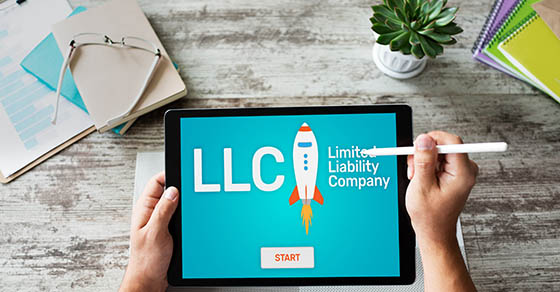

If you operate your small business as a sole proprietorship, you may have thought about forming a limited liability company (LLC) to protect your assets. Or maybe you’re launching a new business and want to know your options for setting it up. Here are the basics of operating as an LLC and why it might be a good choice for your business.
An LLC is a bit of a hybrid entity because it can be structured to resemble a corporation for owner liability purposes and a partnership for federal tax purposes. This duality may provide the owners with the best of both worlds.
Protecting your personal assets
Like the shareholders of a corporation, the owners of an LLC (called “members” rather than shareholders or partners) generally aren’t liable for the debts of the business except to the extent of their investment. Thus, the owners can operate the business with the security of knowing that their personal assets are protected from the entity’s creditors. This protection is much greater than that afforded by partnerships. In a partnership, the general partners are personally liable for the debts of the business. Even limited partners, if they actively participate in managing the business, can have personal liability.
Tax issues
The owners of an LLC can elect under the “check-the-box” rules to have the entity treated as a partnership for federal tax purposes. This can provide a number of benefits to the owners. For example, partnership earnings aren’t subject to an entity-level tax. Instead, they “flow through” to the owners, in proportion to the owners’ respective interests in profits, and are reported on the owners’ individual returns and taxed only once.
To the extent the income passed through to you is qualified business income, you’ll be eligible to take the Section 199A pass-through deduction, subject to various limitations. (However, keep in mind that the pass-through deduction is temporary. It’s available through 2025, unless Congress acts to extend it.)
In addition, since you’re actively managing the business, you can deduct on your individual tax return your ratable shares of any losses the business generates. This, in effect, allows you to shelter other income that you (and your spouse, if you’re married) may have.
An LLC that’s taxable as a partnership can provide special allocations of tax benefits to specific partners. This can be a notable reason for using an LLC over an S corporation (a form of business that provides tax treatment that’s similar to a partnership). Another reason for using an LLC over an S corp is that LLCs aren’t subject to the restrictions the federal tax code imposes on S corps regarding the number of owners and the types of ownership interests that may be issued.
Consider all angles
In conclusion, an LLC can give you corporate-like protection from creditors while providing the benefits of taxation as a partnership. For these reasons, you may want to consider operating your business as an LLC. Contact us to discuss in more detail how an LLC might be an appropriate choice for you and the other owners.

